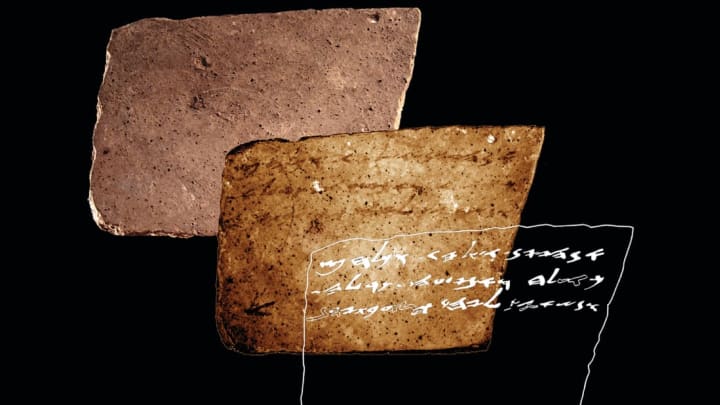Archaeologists Uncover an Ancient Soldier’s Request: 'Send Wine'

The year was 600 BCE, and a Judahite soldier named Ḥananyahu was in search of a drink. “If there is any wine, send [some],” he wrote to a quartermaster from a fortress about a day's walk away. For 2600 years, the message was hidden. But researchers rediscovered it on the back side of an ostracon, or text written on clay using ink, that has been displayed in the Israel Museum for decades, as The New York Times reports.
Ostracon No. 16, excavated in 1965, was part of a group of 100 Hebrew inscriptions discovered in the fortress of Arad, located in the southern region of what was then the Kingdom of Judah (in what is now Israel). Many were orders for provisions addressed to Elyashiv, the Arad quartermaster.
Ḥananyahu’s wine request went undiscovered because the ink it was written with could no longer be seen with the naked eye. As detailed in a new study, researchers from Tel Aviv University used multispectral imaging (taking images at multiple different wavelengths) to reveal the invisible messages that had gone unnoticed for more than 50 years. While the front side of the ostracon had already been well studied before this, the new imaging revealed 20 more words on the front side that had never been deciphered before, including friendly greetings and a discussion of exchanging oil and silver. The back side, which was thought to be blank until now, revealed 17 new words, beginning with the request for wine. The researchers weren't able to confirm exactly how much wine Hananyahu wanted, though.
Ostraca get harder to read after they’ve been excavated, because the ink fades easily over time. The study’s authors make the case that all of these archaeological artifacts discovered up until now should be subject to this sort of imaging. “Although [multispectral] imaging can occasionally provide legibility improvement even decades after the exposure of the ostraca, undoubtedly results would have been far superior and more complete had [multispectral] imaging been done prior to the ink deterioration process,” they write.
If this technology had been available back in 1965, we might have been able to discern exactly how much wine Hananyahu wanted.
[h/t The New York Times]